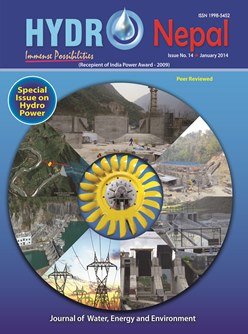Sustainability of Bhutan's Hydropower
DOI:
https://doi.org/10.3126/hn.v14i0.11272Keywords:
Hydropower, GLOF, Dams, Biodiversity, Climate change, Glaciers, IWRM, BhutanAbstract
Bhutan’s river potential for hydropower has been estimated at ~30,000 MW, the majority of which is concentrated in the Wangchhu, Punatsangchhu, Mangdechhu and Drangmechhu river basins. Hydropower forms the backbone of Bhutan’s socio-economic strength: Ninety nine percentage of its electricity supply comes from hydropower generation and hydropower alone contributes of national revenue. Bhutan has been cast as a model in South Asia for its environmental conservation policy. However, the impacts of climate change are becoming evident in the form of fast-retreating glaciers and erratic precipitation patterns that will prove to be costly for the hydropower sector as the country continues to bank on this renewable natural resource.
DOI: http://dx.doi.org/10.3126/hn.v14i0.11272
HYDRO Nepal Journal
Journal of Water, Energy and Environment
Volume: 14, 2014, January
Page: 73-76
Downloads
Downloads
Published
How to Cite
Issue
Section
License
The copyright of the articles and papers published is held by HYDRO Nepal Journal.
The views and interpretation in this journal are those of author(s), and HYDRO Nepal does not bear any responsibility for the views expressed by authors in the journal.




